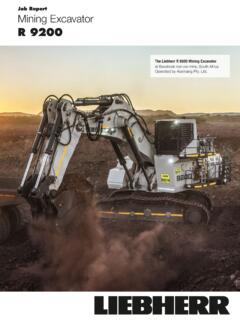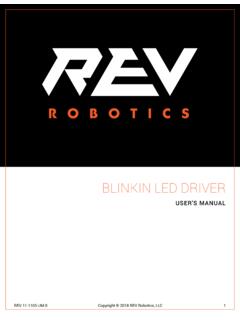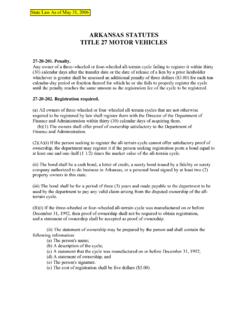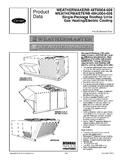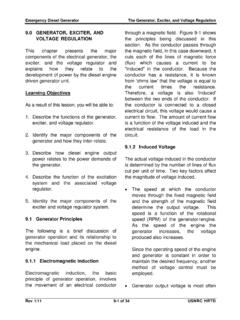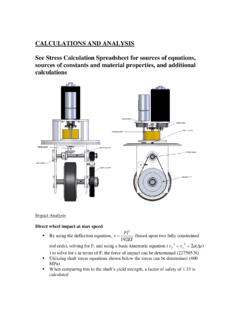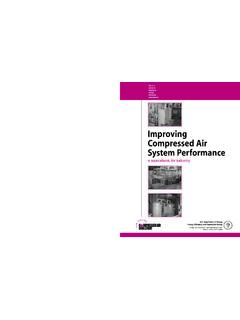Transcription of Design Manual for Winch Systems - Liebherr
1 From a single source, modular, versatile Design Manual for Winch SystemsDesign Manual for Winch Systems2 Contents1 Introduction Page 082 Overview and performance spectrum Page 163 Design basics and boundary conditionsPage 204 Determination of mechanismPage 265 Iteration for deviating drum speedsPage 366 Determination of gear ratioPage 427 Determination of motor sizePage 468 Determination of switch cabinet size Page 509 Calculation of required rope lengthPage 5410 Determination of drum widthPage 5811 Determination of basic dimensionsPage 6612 Features and optional functionsPage 7013 Enquir yPage 7414 Appendix (iteration tables)
2 Page 78 Design Manual for Winch Systems3 Design basisNomenclatureDesign basisLifting loadmh [t]Lifting speedvh[m/min]Lifting heightH [m]Number of fixed deflection sheaves between drum and hoist or moving partnu [-]Required service lifet [h]Number of winding layers on a drumnl [-]Number of parallel hoists or ropes reeved on a drumnr [-]Hoist reevingnm [-]Installation altitudeHeight above sea level [m]Ambient temperature winchT [ C] ( ) Ambient temperature switch cabinetTSRA [ C] ( ) Design resultsNomenclatureResults of 1st calculationIf required Results for iterationRope drive efficiency s [-] Rope tensile forceFS [kN]Rope speedvS [m/min] Required usable winding capacityLW [m] Load spectrumLi [-] Operating classTi [-] Mechanism groupM [-] Rope diameterd [mm]Gearbox sizePEG [-]Drum diameterDT [mm]Max.
3 Winding diameterDW_max [mm]Mean winding diameterDW_mean [mm]Drum speednT [rpm]Equivalent service life (only if iteration required)tequ [h]Redefinition of operating class (only if iteration required)Ti_PEG [-] Redefinition of mechanism group (only if iteration required)MPEG [-] Required gear ratio @ 1500 rpmi@1500rpm [-]Required gear ratio @ 750 rpmi@750rpm [-]Rated motor speed 1500 or 750 rpmnB [rpm]Selected gear ratioi [-]Gearbox efficiency PEG [-] motor speednMot [rpm]Required mechanical drive powerPMech [kW] motor correction factorkM [-] motor operation categoryS [-]Required mechanical motor powerPMotor [kW]Electric motor sizeKGF [-] motor lengthLMot [mm] motor currentIMotor [A]Frequency converter correction factor kFC [-]Frequency converter output currentIFC [A]Switch cabinet sizeSRA [-]Switch cabinet dimensions[mm]WSRA = HSRA = DSRA = Required switch cabinet apparent powerPSRA [kW]Sheave diameterDS [mm]
4 Rope length between Winch and hoistLSW [m]Max. distance between upper and lower return pulley block of the hoistL1 [m]Required rope lengthLR [m]Groove width on the drum for one ropeWV [mm]Drum variantTx [-] Drum widthWT [mm] Winch system dimensions[mm]WWIS = HWIS = DWIS = The input screen for the results and Design basis and boundary conditions of the Winch system can also be found at ResultsDesign Manual for Winch Systems4 Step PageDesign basics and boundary conditions Determination of basic boundary conditions such as : Lifting load, lifting speed and lifting height Number of deflection sheaves Required service life Number of layers and number of ropes per drum Hoist reeving Calculation of the rope drive efficiency Conversion of lifting load to rope tensile force Conversion of lifting speed to rope speed Calculation of the required usable winding capacity Mechanism group according to application and required service life 16 Determination of mechanismDetermination of the rope, drum and max.
5 Winding diameter as well as the gearbox size based on Rope hoist Mechanism group Number of winding layers (1 to 7) Number of parallel hoists (1 or 2) 26If required: iteration of the determination of the mechanism if drum speed deviates strongly from Design speed of gearbox ( nT < 11 rpm or nT > 17 rpm )Determination of the drum speed based on Rope speed Drum diameter Mean winding diameter 36 Determination of the gear ratio and calculation of the mechanical drive power based on Gearbox size Drum speed Rope tensile force Rope speed Gear efficiency 42 Determination of the motor size based on Mechanical drive power Installation altitude Ambient temperature range Operation category 46 Determination of the switch cabinet and frequency converter size and connected apparent power based on motor current Installation altitude Mechanical drive power Ambient temperature range 50 Calculation
6 Of the required rope length based on Rope length between Winch and hoist Hoist Design Sheave diameter 54 Determination of the drum width based on Required usable winding capacity Rope diameter Drum diameter Number of winding layers 58 Determination of basic dimensions of the Winch system 66 Features and optional functions 70 Design stepsDesign Manual for Winch Systems5 Preamble and ImprintThis Design Manual is intended to provide a broad overview into the performance spectrum of Liebherr Winch Systems .
7 It should guide the end user through the basic Design steps of a Winch within the modu-lar system of Liebherr . The usual requirements for the definition of Winch Systems have been taken into account. Requirements not covered in this Manual can of course be examined on request and custom-er-specific solutions can be provided. The Design procedure has been broken down and is shown in the adjacent table. Depending on the re-sult, it can be necessary to iterate the calculation steps for the definition of the boundary conditions and the mechanism. Detailed information about the individual Design steps can be found in the respective chapter. The intermediate results of the preliminary Design can be entered in the table of the expanded cover sheet.
8 We expressly point out that only a preliminary Design is possible using this Manual in order to give the customer an impression of the required components and dimensions of the Winch system . A detailed technical evaluation by Liebherr must always be carried out as the project reserve the right to make changes resulting from further development of the product texts, images, graphics, tables or other image representations and their arrangement are legally protected (Copyright Liebherr -Components AG, all rights reserved). Without express permission in writing of Liebherr -Components AG, the contents of this Design Manual may neither be used for com-mercial purposes nor be copied, distributed, modified or made available to third parties for commercial purposes.
9 Some of the images shown in this Design Manual are subject to the copyright of third : Liebherr -Components AGPostfach 222 CH-5415 Nussbaumen / AGSwitzerlandTel: +41 (0) 56 296 43 00 Fax: +41 (0) 56 296 43 01e-mail: February 2019 Liebherr -Components Biberach GmbH, Biberach an der RissDesign Manual for Winch Systems6 Design Manual for Winch Systems7 Contents1 IntroductionPage 082 Overview and performance spectrumPage 163 Design basics and boundary conditionsPage 204 Determination of mechanismPage 265 Iteration for deviating drum speedsPage 366 Determination of gear ratioPage 427 Determination of motor sizePage 468 Determination of switch cabinet size Page 509 Calculation of required rope lengthPage 5410 Determination of drum widthPage 5811 Determination of basic dimensionsPage 6612 Features and optional functionsPage 7013 Enquir yPage 7414 Appendix (iteration tables)
10 Page 78 Design Manual for Winch Systems8 Winch Systems from LiebherrLiebherr has been producing all the relevant components required for a lifting system for many years and now also provides complete Winch Systems on the market. The components are perfectly matched in their function. This results in convincing system solutions that can be integrated into a variety of Manual for Winch Systems9 Safe, robust, powerfulModular systemLiebherr provides customised system solutions based on standard components for lifting applications that are charac-terised by scalability and simple integration and commission-ing at the customer site -"plug & lift".





